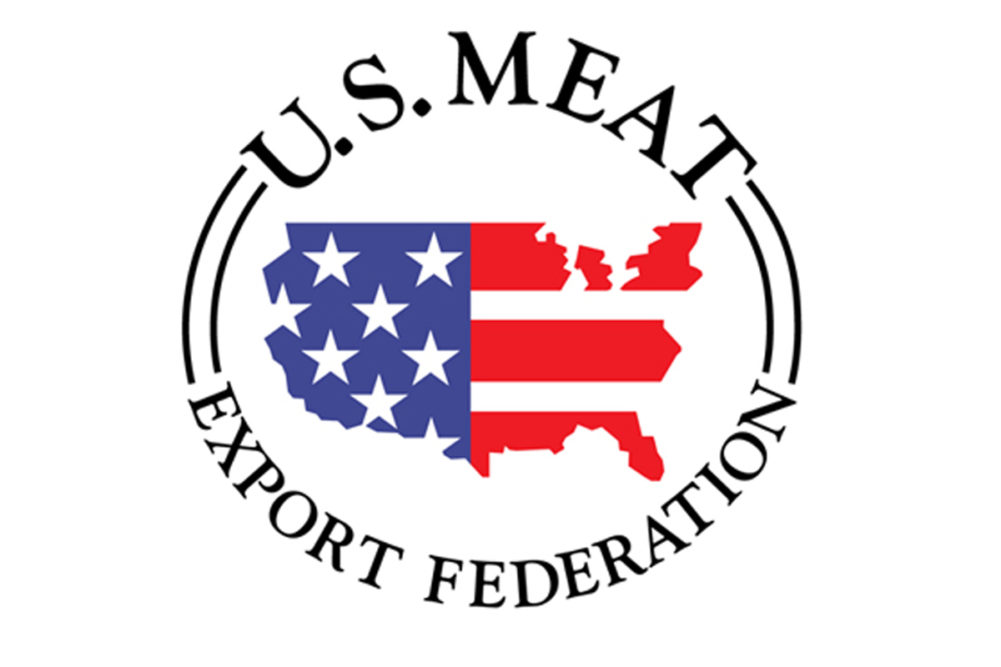WASHINGTON – Despite closures and interruptions in the meat supply chain, data released by the US Dept. of Agriculture and complied by the US Meat Export Federation showed solid supply under the circumstances for both beef and pork.
The association pointed out that beef exports were below April 2019 totals but still exceed $600 million in value. Pork numbers continued to be high over last year’s levels but slowed from a record pace in early 2020.
“Considering all the challenges the US red meat industry faced in April, export results were encouraging,” said Dan Halstrom, USMEF president and chief executive officer. “Exporters lost several days of slaughter and processing due to COVID-19, and shipments to Mexico and some other Latin American markets declined due to slumping currencies and the imposition of stay-at-home orders. But despite these significant headwinds, global demand for US beef and pork remained strong.”
USMEF expects similar results in May but Halstrom said that red meat production continues to show signs of recovery and a possible strong half to 2020.
“International customers are relieved to see US production rebounding, solidifying our position as a reliable supplier,” he said. “This helps address a major concern for buyers, as COVID-19 has disrupted meat production in many countries – not just the United States. Demand remains robust for US red meat, especially at retail, but USMEF is actively working with our foodservice customers across the globe to help ensure a strong recovery for the restaurant, catering and hospitality sectors. Many are adjusting to an entirely new business climate, and the US industry assisting them in this process can help ensure that US pork, beef and lamb will be featured on their menus.”
Pork exports reached 22% to 264,048 tonnes for April. Pork value was up 28% to $682.8 million. For the first four months of the year, pork exports remain on a record pace up 35% in volume to 1.1 million tonnes and 45% in value with $2.91 billion.
Pork exports accounted for just under 32.4% of total April pork production and 29.3% for muscle cuts only. Both numbers are up nearly 10% from April 2019. Through April, the percentage of total pork production exported was up to 32.4% and 29.3% for muscle cuts only.
With a significant dip in production during April, pork export value per heard jumped to a record $72.55 in April, up 43% from a year ago. Through the first four months, the per-head average was up 40% to $66.36.
Meanwhile, US April beef numbers slowed down from previous months in 2020.
Beef exports for April decreased 6% from 2019 to 98,613 tonnes. Export value also fell by 11% to $600.9 million.
During the last four months, beef exports showed a 5% volume increase compared to 2019 at 433,316 tonnes and 3% more in value ($2.66 billion).
April beef exports accounted for 15.9% of total production and 13.5% for beef muscle cuts, up from 13.5% and 11.1%, respectively, a year ago. Beef exports made up 14.4% of total four-month beef production and 11.9% for muscle cuts only. Both are up from 13.8% and 11.2% from 2019.
Despite lockdowns during the first quarter, China’s demand for pork did not budge, mainly due to the pork shortage resulting from African swine fever still existing in the country.
Demand for pork continued to be high in China/Hong Kong, but it also increased significantly to Japan, Vietnam and Chile.
In Mexico, March pork exports slowed a bit went to 2% to 238,108 tonnes with value increasing 16% to $413.6 million.
For beef exports, Japan showed strong numbers with an increase of 28% compared to last year at 39,232 tonnes. It also jumped 39% in value to $164.2 million.
Through the first four months, exports exceeded the 2019 pace by 16% in volume (114,152 tonnes) and 13% in value ($719.8 million).
Beef in South Korea was down 14% in volume at 19,411 tonnes. Value was at $133.9 million. This pushed the four-month 6% increase in volume (83,345 tonnes) and 4% value increase to $598.7 million.
Lamb exports went higher for the first time in 2020, reaching 2,031 tonnes and a 145% increase in volume. Value was 11% lower at ($4.8 million).

